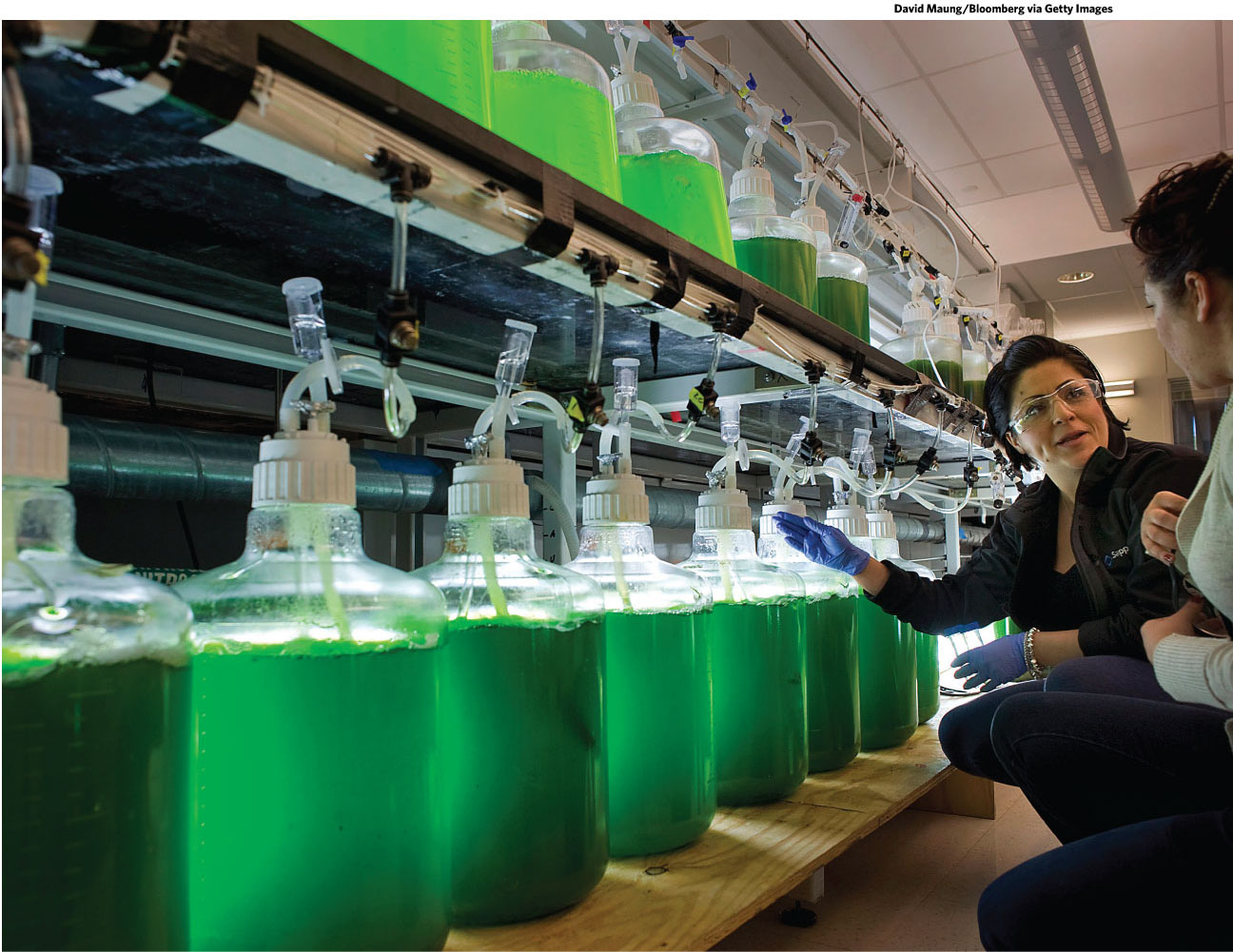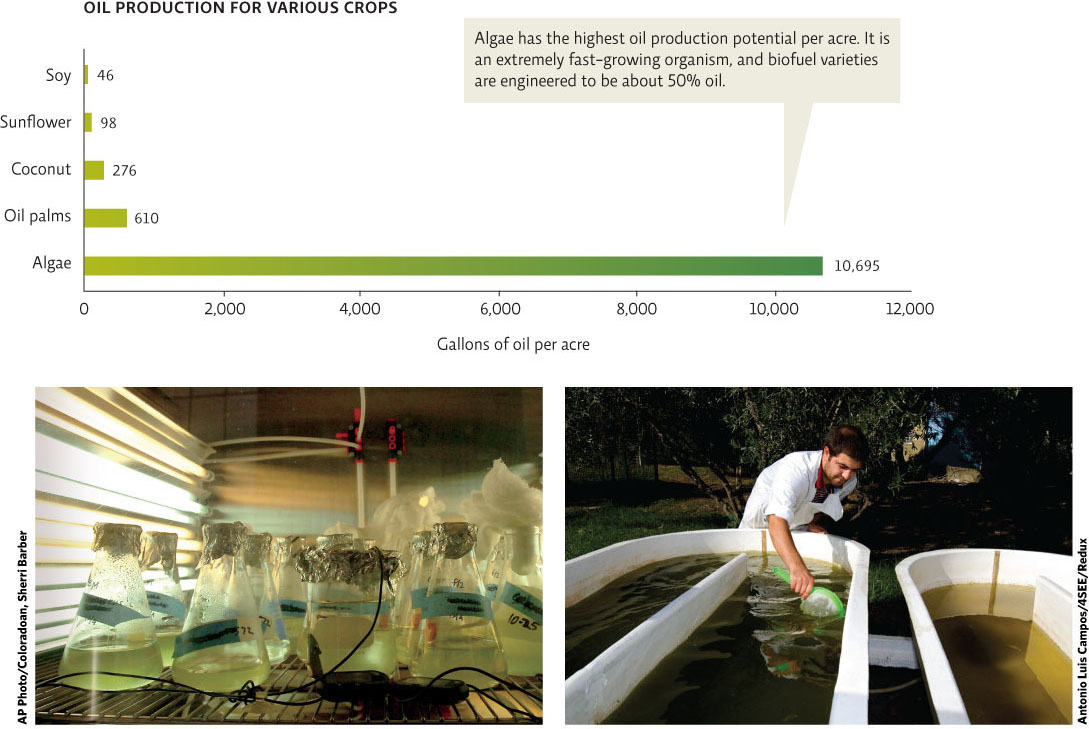There is another rising biofuel star: algae.
In January 2009, Continental Airlines ran a test flight of a Boeing 737 powered by a blend of normal fuel and a new type of biofuel manufactured from algae.
Like Tillman, algae researcher Stephen Mayfield didn’t set out to discover a new type of biofuel. But after spending decades studying and tweaking the genetics of algae, he and his colleagues at the University of California, San Diego, had an epiphany in 2006. At that time, Mayfield was watching TV footage of the glaciers shrinking from climate change, and he was paying more for gas every time he fueled up. During a meeting to discuss an ongoing research project to engineer algae to produce drugs such as antibiotics, a new idea arose. “We realized, ‘wait a minute, if we can do that, we can produce fuel.’”
Like tiny factories, algae use photosynthesis to convert CO2 and sunlight into sugars and then convert some of the sugars into oil, which can be harvested and converted to biodiesel. Algae are now making the same kind of headlines as LIHD biofuels, and for good reason.
KEY CONCEPT 32.5
Algae may be a valuable alternative to land-based biofuel crops. Its water demands are high, but growing it with wastewater or seawater may address this disadvantage.
Algae have some clear advantages over other biofuel sources. Like switchgrass, algae won’t compete with food. They grow very quickly and can be raised on salty water, so they don’t use up freshwater. Research is also showing that algae can be grown using industrial or domestic wastewater, thus providing the added advantage of decreasing the volume of wastewater that local communities must deal with. In addition, algae is much more productive than land-based biofuel crops, generating as much as 125 times more oil per acre than biodiesel fuel crops, such as soybean, oil palm, and canola.
But algae can be finicky—it is difficult to maintain the ideal conditions to maximize oil production—and the facilities are expensive. Plus, unlike with corn and other land crops, people haven’t been harvesting algae on a large scale for generations, so scientists have to devise a new infrastructure. Even so, algae-based biofuels are starting to look like big business. There are hundreds of companies now invested in turning algae oil into fuel, according to the National Renewable Energy Laboratory. Sapphire Energy, a company that Mayfield cofounded, opened its Green Crude Farm in New Mexico in 2012. It was the world’s first commercial algae-to-energy facility, a move that Mayfield calls “a huge milestone for the industry.”

Those investments may one day pay off. After Continental Airlines analyzed data from the test flight, it found that the algae biofuel blend resulted in a 1.1% increase in fuel efficiency over regular jet fuel and didn’t affect the jet’s ability to perform flight maneuvers such as a midflight engine shutdown and restart. INFOGRAPHIC 32.4
Algae can be grown as a feedstock for biofuels. Biodiesel is the most common product, but the sugars in algae can also be extracted to produce ethanol, while the solids can even be harvested to produce a high-protein animal feed. Self-contained operations can grow lots of algae in a small space (in tubes or vats) or in outdoor algae ponds—which take up more land area. A New Zealand company, Aquaflow, even plans to harvest wild algae from coastal areas with algal blooms.

Researchers test different types of algae to see which produces the best oil to use for biodiesel formation.
Algae for biofuels growing in above-ground ponds.
AP Photo/Coloradoan, Sherri Barber
Antonio Luis Campos/4SEE/Redux

Why do you think so much more oil per acre is produced from algae than from other oil crops?
The oil probably makes up a much greater percentage of the harvested algae “crop” than other crops. Researchers have engineered it to be about 50% oil and this is probably much higher than the other oil crops which only have the oil in the seeds (soybeans, sunflower seeds, coconuts). Along these same lines, the other oil crops take up much more space to grow a comparable amount of oil because much of the oil crop plants is composed of roots, stems, leaves and other parts that do not contain the oil. Algae, on the other hand is a single celled organism so there are no roots, stems, etc. that are part of the harvested crop.